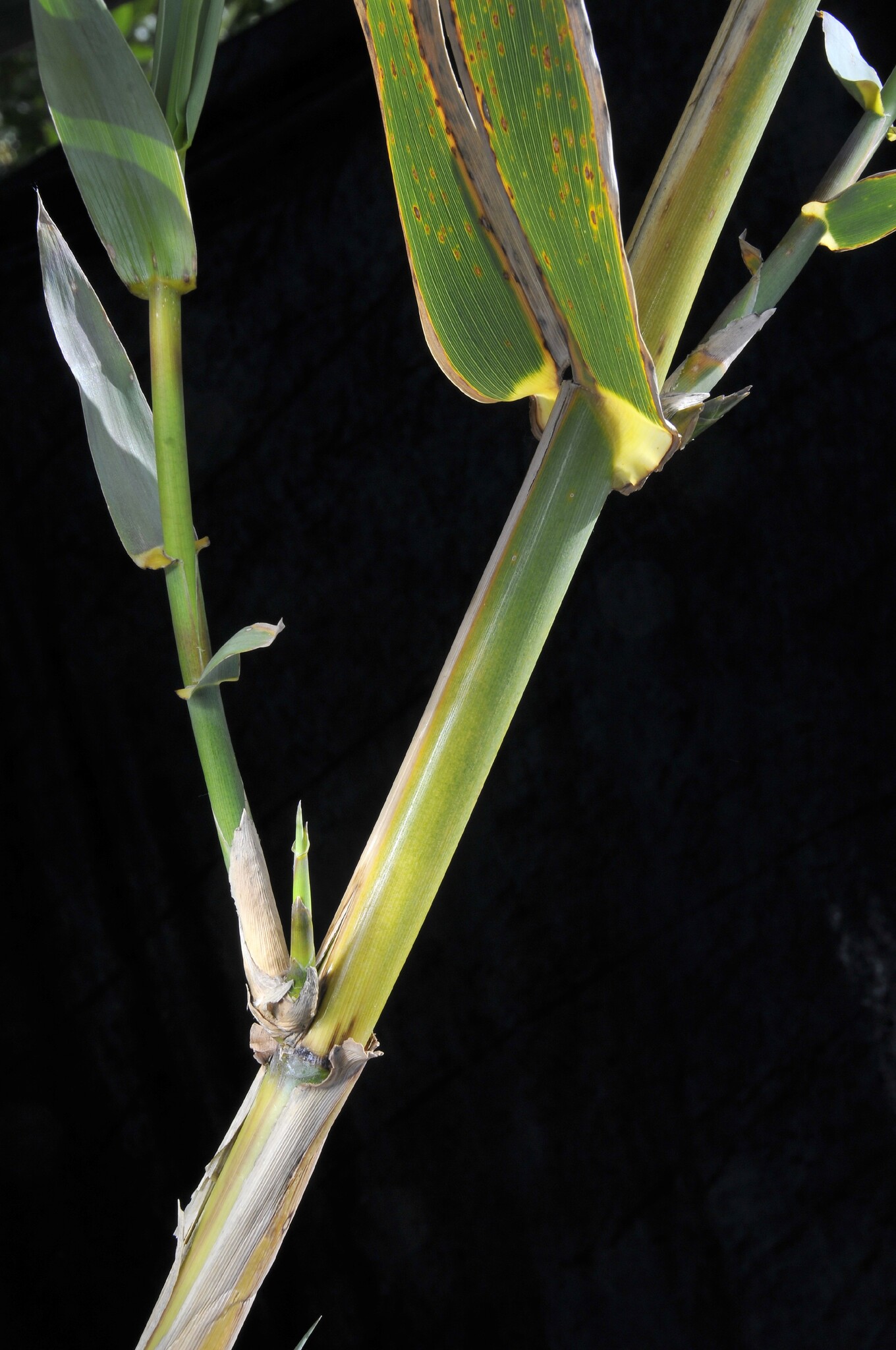
Latin arundo – a reed. Classical name for Arundo donax.
Tall, reed-like almost woody rhizomatous perennial. Leaf blades broad, flat, linear, 2-ranked, rolled in bud. Ligule with a fringed short membrane, not narrowed to a petiole as in the true bamboos. Inflorescences terminal, plume-like, open. Spikelet 12-18 mm long, laterally flattened. Florets mostly bisexual, 2-7. Glumes 2, about the same size and with 3-5 veins on both upper and lower glumes, persistent, shedding above. Lemma 3-5 veined, with soft hair at the base on the back. Palea half to two thirds lemma length, awnless, 2-nerved, 2-keeled.
Grown for the attractive, often variegated, bamboo-like foliage. A. donax is a significant weed species blocking drains and waterways.
Division.
Culms of A. donax have long been the source of reeds for musical instruments, especially clarinets, and were the source of the original Pan pipes. Also used for fodder, walking sticks, thatch, fishing-rods and as a source of cellulose for paper.
Giant clump-forming reed-like plants with the leaves often variegated, prominently 2 ranked; inflorescences plumose due to hairy lemmas.
3 species from Mediterranean to eastern Asia. 1 species naturalised in Australia.
Source: (2005). Poaceae. In: . Horticultural Flora of South-eastern Australia. Volume 5. Flowering plants. Monocotyledons. The identification of garden and cultivated plants. University of New South Wales Press.
